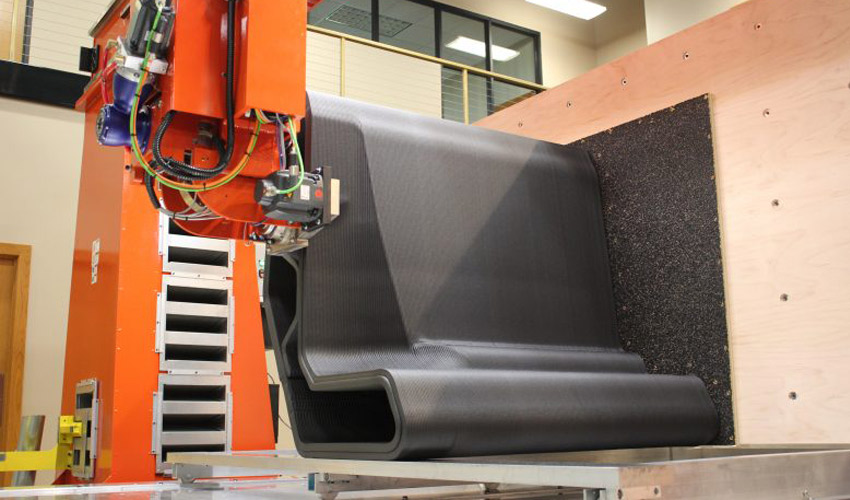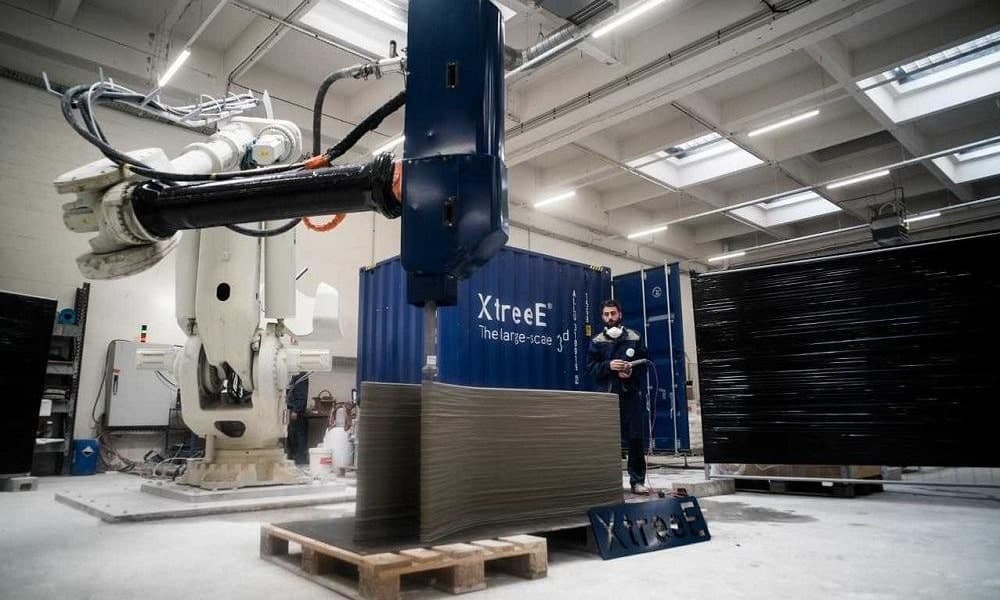
The world of large format 3D printing is dominated by a few key players who have emerged as the pioneers in this rapidly growing industry. Below are some of the biggest large format 3D printing companies and how they stand to benefit from this revolution:
Stratasys: Stratasys is a leading provider of large format 3D printing solutions, offering a range of industrial-grade printers that are capable of producing high-quality prototypes and end-use parts. With its powerful proprietary Fused Deposition Modeling (FDM) technology, Stratasys is well positioned to capitalize on the growing demand for large format 3D Printing solutions.
HP: HP is one of the largest and most well-known technology companies in the world, and it has recently entered the large format 3D printing market with its HP Jet Fusion technology. With its proven track record in the technology industry, HP has the resources and expertise to quickly establish itself as a leader in the large format 3D printing market.
Massivit3D: Massivit3D is a leading provider of large format 3D printing solutions for the Engineering, Visual Communications, Entertainment, Academia, Interior Design, and Architectural markets. Leveraging its proprietary Gel Dispensing Printing (GDP) technology, the company’s solutions enable rapid and cost-effective production of scale 1 models and parts.
Carbon: Carbon is a leading provider of large format 3D printing solutions that use Digital Light Synthesis (DLS) technology to produce high-quality, end-use parts. With its cutting-edge technology and strong focus on customer satisfaction, Carbon is well positioned to continue to grow and expand its presence in the large format 3D printing market.
These companies stand to benefit greatly from the continued growth of the large format 3D printing market as more and more engineers, manufacturers, and other businesses adopt this innovative technology. By providing high-quality, cost-effective solutions for large format 3D Printing, these companies are helping to drive the growth of the industry and revolutionize the way products are designed and manufactured.
Engineers Stand To Benefit Massively
Large format 3D printing has revolutionized the engineering world by allowing engineers to quickly and easily create prototypes, designs, and finished products. By streamlining the manufacturing process, engineers can now focus on developing the best designs and products possible, instead of being bogged down by the time-consuming task of building prototypes by hand.
One of the biggest advantages of large format 3D printing is the ability to produce parts and prototypes at a much faster rate than traditional manufacturing methods. This means that engineers can test and refine their designs in a fraction of the time it would take using traditional methods. In addition, large format 3D printing can be performed on a much larger scale, making it easier to produce large or complex parts and prototypes that would be difficult or impossible to produce using traditional methods.
Another advantage of large format 3D printing is its ability to produce high-quality, precise parts and prototypes. This is because 3D printing uses computer-aided design (CAD) software to create detailed, accurate models. This precision and accuracy is essential for engineers, who need to ensure that their designs are functional and fit for purpose.
In addition, large format 3D printing is incredibly versatile and flexible. Engineers can print parts in a variety of materials, including plastic, metal, and composites, to produce prototypes that are representative of the final product. This means that they can test their designs in real-world conditions, which is essential for ensuring that their designs are robust and reliable.
Finally, large format 3D printing is also cost-effective. Traditional manufacturing methods can be expensive, especially when it comes to producing large or complex parts. With 3D printing, engineers can produce prototypes and parts at a much lower cost, which means they can focus their resources on developing the best possible designs and products.
But, the above are just advantages to the world of engineering on a macro-level. How does large format 3D printing help engineers specifically? Here are just several concise examples:
Design Verification: Large format 3D printing allows engineers to produce prototypes of their designs in a matter of hours. This enables engineers to quickly verify the design’s form, fit, and function, leading to faster product development cycles.
Reduced Costs: By producing prototypes in-house, engineers can significantly reduce the costs associated with traditional prototype development processes such as tooling, shipping, and storage.
Improved Accuracy: Large format 3D printing provides engineers with highly accurate and precise parts. This level of precision can lead to better-performing and longer-lasting products, as well as reduced production time and costs.
Material Options: Large format 3D printing technology offers a wide range of material options, including plastics, metals, ceramics, and composites. This diversity of materials enables engineers to choose the best material for their specific applications, leading to improved performance and durability.
Customization: Large format 3D printing allows engineers to produce highly customized and complex parts, which are not possible to produce through traditional manufacturing processes. This level of customization can lead to improved product performance and increased customer satisfaction.
Increased Productivity: Large format 3D printing can significantly increase the productivity of engineers, as it enables them to quickly produce and test prototypes, reducing the overall time required to bring a product to market.
Sustainability: Large format 3D printing is a more sustainable manufacturing method compared to traditional methods as it reduces waste and energy consumption. Additionally, it enables engineers to produce only the parts they need, reducing the overall carbon footprint associated with the production process.
In conclusion, large format 3D printing is a powerful tool that can help engineers streamline their work. By allowing them to quickly and easily produce high-quality, precise parts and prototypes, engineers can focus on developing the best designs and products possible. Whether it's reducing time-to-market, improving product quality, or reducing costs, large format 3D printing is a valuable tool that should be considered by all engineers looking to improve their workflow.




